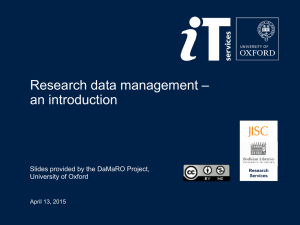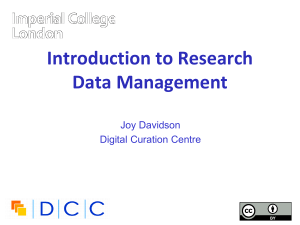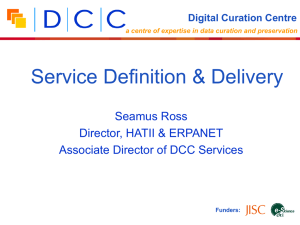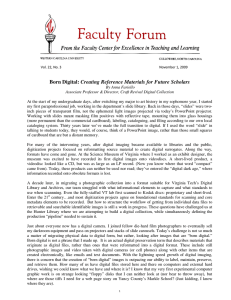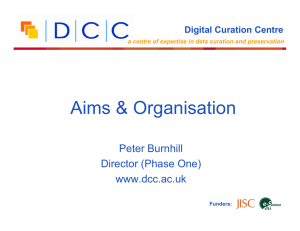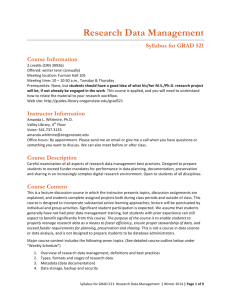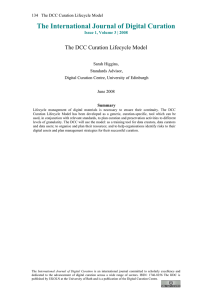The DCC Curation Lifecycle Model The Curation Lifecycle
advertisement
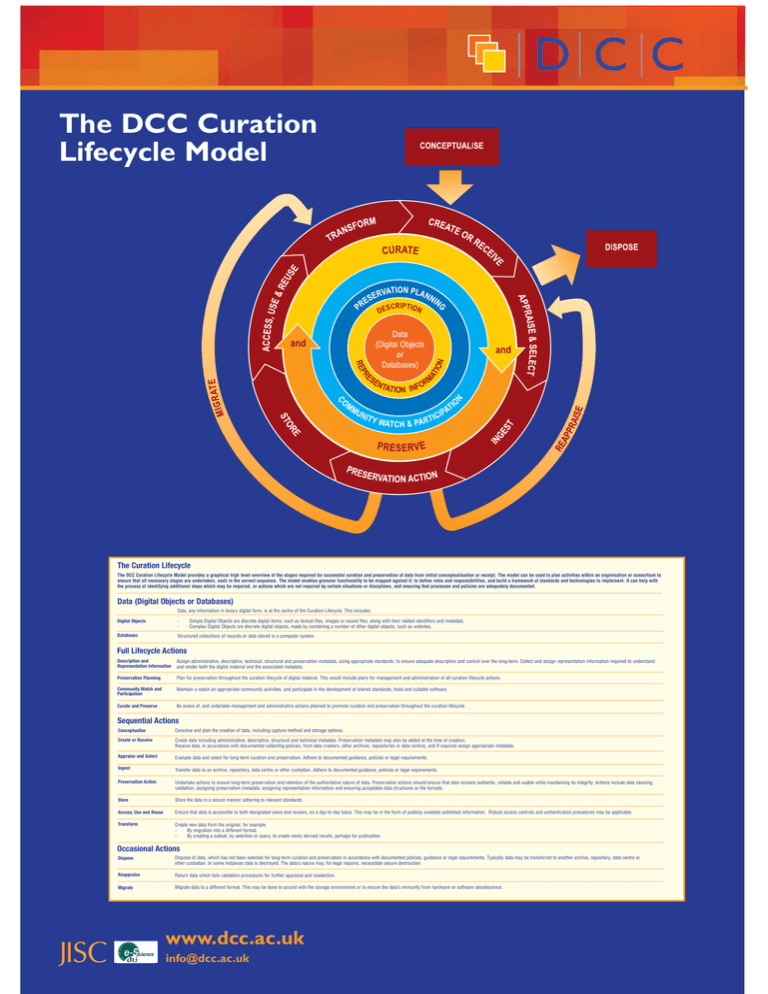
The DCC Curation Lifecycle Model The Curation Lifecycle The DCC Curation Lifecycle Model provides a graphical high level overview of the stages required for successful curation and preservation of data from initial conceptualisation or receipt. The model can be used to plan activities within an organisation or consortium to ensure that all necessary stages are undertaken, each in the correct sequence. The model enables granular functionality to be mapped against it; to define roles and responsibilities, and build a framework of standards and technologies to implement. It can help with the process of identifying additional steps which may be required, or actions which are not required by certain situations or disciplines, and ensuring that processes and policies are adequately documented. Data (Digital Objects or Databases) Data, any information in binary digital form, is at the centre of the Curation Lifecycle. This includes: Digital Objects - Simple Digital Objects are discrete digital items; such as textual files, images or sound files, along with their related identifiers and metadata. Complex Digital Objects are discrete digital objects, made by combining a number of other digital objects, such as websites. Databases Structured collections of records or data stored in a computer system. Full Lifecycle Actions Description and Representation Information Assign administrative, descriptive, technical, structural and preservation metadata, using appropriate standards, to ensure adequate description and control over the long-term. Collect and assign representation information required to understand and render both the digital material and the associated metadata. Preservation Planning Plan for preservation throughout the curation lifecycle of digital material. This would include plans for management and administration of all curation lifecycle actions. Community Watch and Participation Maintain a watch on appropriate community activities, and participate in the development of shared standards, tools and suitable software. Curate and Preserve Be aware of, and undertake management and administrative actions planned to promote curation and preservation throughout the curation lifecycle. Sequential Actions Conceptualise Conceive and plan the creation of data, including capture method and storage options. Create or Receive Create data including administrative, descriptive, structural and technical metadata. Preservation metadata may also be added at the time of creation. Receive data, in accordance with documented collecting policies, from data creators, other archives, repositories or data centres, and if required assign appropriate metadata. Appraise and Select Evaluate data and select for long-term curation and preservation. Adhere to documented guidance, policies or legal requirements. Ingest Transfer data to an archive, repository, data centre or other custodian. Adhere to documented guidance, policies or legal requirements. Preservation Action Undertake actions to ensure long-term preservation and retention of the authoritative nature of data. Preservation actions should ensure that data remains authentic, reliable and usable while maintaining its integrity. Actions include data cleaning, validation, assigning preservation metadata, assigning representation information and ensuring acceptable data structures or file formats. Store Store the data in a secure manner adhering to relevant standards. Access, Use and Reuse Ensure that data is accessible to both designated users and reusers, on a day-to-day basis. This may be in the form of publicly available published information. Robust access controls and authentication procedures may be applicable. Transform Create new data from the original, for example By migration into a different format. By creating a subset, by selection or query, to create newly derived results, perhaps for publication. Occasional Actions Dispose Dispose of data, which has not been selected for long-term curation and preservation in accordance with documented policies, guidance or legal requirements. Typically data may be transferred to another archive, repository, data centre or other custodian. In some instances data is destroyed. The data’s nature may, for legal reasons, necessitate secure destruction. Reappraise Return data which fails validation procedures for further appraisal and reselection. Migrate Migrate data to a different format. This may be done to accord with the storage environment or to ensure the data’s immunity from hardware or software obsolescence. www.dcc.ac.uk info@dcc.ac.uk

